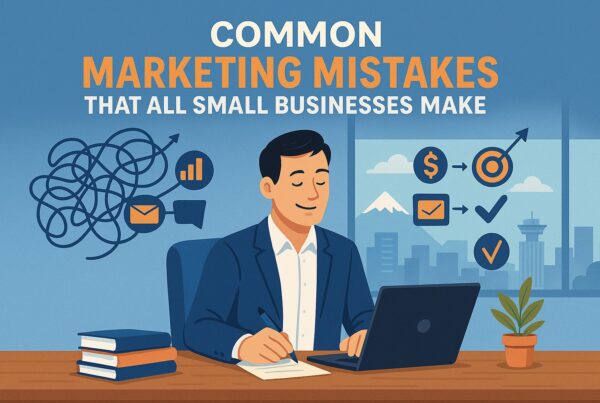Exploring “What’s the Business”: Definition, Types, and Basic Principles
Wondering ‘what’s the business’? In essence, business is the backbone of economic activity. Through initiatives ranging from single-person startups to multinational giants, it encompasses producing and exchanging goods and services for profit. This exploration uncovers the various forms, structures, and essentials of business, providing clarity for anyone looking to understand this dynamic human enterprise.
Key Takeaways
- Businesses, ranging from sole proprietorships to corporations, are central to economic activity. They drive growth, innovation, and job creation within an economy influenced by various factors like interest rates and consumer spending.
- The structure of a business, which could be a sole proprietorship, LLC, corporation, etc., has implications on legal liabilities, tax obligations, and the growth potential, affecting the owner’s risk exposure and company operations.
- The lifecycle of a business includes several stages, each with distinct challenges and requirements, from inception with a solid business plan to growth strategies like market expansion. It relies heavily on sound financial management, legal compliance, and effective human resource policies.
Decoding the Business World

The business world is an intricate web of activities, relationships, and structures, all interlinked to form the backbone of our economies. From neighbourhood stores to multinational corporations, businesses drive economic activity, create jobs, and foster innovation. The word business, in this context, refers to the business environment shaped by factors such as:
- interest rates
- tax rates
- consumer spending
- employment
plays a significant role in the overall economy.
Businesses, as various forms of business organization, come in different shapes and sizes, classified into:
- Sole proprietorships
- Partnerships
- Limited liability companies (LLCs)
- Corporations
Each type has unique characteristics defining its operations.
The Essence of Economic Activity
The pulse of any economy beats the ceaseless rhythm of business activity. Businesses:
- Generate economic activity
- Contribute to the tax base
- Support local economies by creating jobs and providing essential goods and services.
- Utilize resources to produce goods and services, contributing to innovation and development.
Launching your venture could be your opportunity to join this economic symphony.
Core Business Activities
Several key activities drive every business’s growth and success. These include strategy, finance, sales and marketing, research and development, and information technology.
For example, buying and selling goods and services involves a series of steps, from preparation and negotiation to finalization – all that business. Manufacturing, too, is a vital business activity, transforming raw materials into finished goods, such as in the mattress production business. However, sometimes, there might be unfinished business that needs to be addressed to ensure a smooth operation.
Anatomy of Business Structures

Just as the human body has different organs, each playing a unique role, businesses also have various structures. These include:
- Sole proprietorships
- Partnerships
- Corporations
- Limited liability companies (LLCs)
- Cooperatives
The choice of structure depends on several factors, including the nature of the business, its size, and its financial needs.
Sole Proprietorship Simplicity
Imagine being the captain of your ship, steering it through the rough seas of the business world. That’s what a sole proprietorship is like. It’s a business owned and operated by one individual responsible for its financial outcomes and obligations.
This structure comes with its share of risks, including reduced financial and legal safeguards, challenges securing financing, and difficulties raising capital.
Navigating Limited Liability Companies
On the other hand, a Limited Liability Company (LLC) is like a formidable fortress, protecting its owners from personal liability for the company’s debts or obligations. To establish an LLC, a business must follow certain steps, such as selecting a business name, appointing a registered agent, and obtaining a copy of the Articles of Organization. This structure comes with benefits such as personal liability protection and the ability to avoid double taxation, though it also has its challenges.
Choosing the right structure is crucial for your business’s success and peace of mind.
Book a call with me today, and let’s discuss the best foundation for your business to thrive. Click here to get started.
Sizing Up Businesses

Businesses of all shapes and sizes contribute uniquely to the economy. Small and medium-sized enterprises (SMEs) are the economy’s building blocks, facilitating entrepreneurship and technological advancements.
On the other hand, large businesses contribute significantly to the economy through their sizeable share of GDP and economic activity.
Small Business Cornerstones
Small businesses, including local businesses, often serve as the bedrock of many economies and play a pivotal role in stimulating job creation and innovation. Despite their importance, they often face challenges such as locating customers, enhancing brand recognition, and dealing with financial constraints when starting their own businesses, which can impact their journey to becoming successful businesses.
Small business owners, you’re not alone in your journey.
Let’s talk if you’re looking for strategies to overcome obstacles and achieve remarkable growth. Click here to book your 15-minute strategy session with me.
Large Scale Operations
Large businesses have a broader reach when operating on a grander scale than their smaller counterparts. They have a presence in international markets, highly specialized departments, and goals that align with strategic, tactical, and operational objectives. These organizations also face unique challenges, such as managing resources effectively and navigating the complexities of operating in multiple jurisdictions.
The Lifecycle of a Business

Much like a living organism, a business progresses through various stages throughout its lifecycle, starting from inception and leading up to growth and expansion. At each stage, it faces unique challenges and opportunities that require different strategies and approaches, similar to the intricacies of stage business theatre.
Starting with a Business Plan
A business’s voyage starts with a robust business plan, serving as a roadmap detailing its goals, strategies, and financial projections. This plan serves as a guide for the business, helping it navigate the challenges of the startup phase and laying the foundation for future growth.
Ready to navigate the complexities of starting and growing your business with confidence?
Click here to book a 15-minute consultation with me and turn your vision into reality. Let’s craft a business plan that sets you up for success.
Growth and Expansion Strategies
As a business matures, it looks for ways to grow and expand. This could involve:
- Entering new markets
- Launching new products
- Forming strategic partnerships
- M acquiring other businesses
Each strategy comes with its own set of risks and rewards, requiring careful evaluation and planning.
Financial Foundations of Business
Parallel to a building that requires a sturdy foundation to stand tall, a thriving business has a robust financial structure.
This involves managing profitability, securing loans, and making wise investments.
Securing a Business Loan
For many businesses, especially in the nascent stages, securing a loan often becomes a pivotal move. It involves understanding the purpose of the loan, selecting the profitability type, and preparing a strong loan application.
While securing a loan can be challenging, having the right collateral and meeting the lender’s requirements can increase the chances of success.
Investment and Profitability
A business’s profitability is deeply influenced by its investment decisions. Whether investing in new equipment, technology, or human resources, the right investments can boost revenue and drive growth; balancing risk and reward is critical to ensuring a return on investment.
Finance is the backbone of your business’s growth.
If you’re seeking expert advice on securing loans and managing investments wisely, I’m here to help. Click here to book a consultation and take the first step towards financial mastery.
Intellectual Assets and Legalities
In the current information age, a business’s intellectual assets like:
- patents
- trademarks
- copyrights
- trade secrets
often hold the highest value. Protecting these assets while navigating commercial law is crucial for a business’s success.
Safeguarding Trade Secrets
Among the intellectual assets a business must shield, trade secrets hold a distinctive place. Whether it’s a secret recipe, manufacturing process, or marketing strategy, trade secrets give a business a competitive edge. Registering copyrights, trademarks and maintaining confidentiality are critical steps in protecting these assets.
Navigating Commercial Law
Commercial law governs business interactions and interactions between businesses and consumers. It covers a wide range of areas, including contracts, sales, and business organizations. Understanding and complying with commercial laws can help a business avoid legal pitfalls and maintain its reputation.
Human Resources and Organizational Culture
At the core of any business lie its people. Human resources play a crucial role in recruiting, training, and managing employees, while fostering a positive company culture.
Talent Management
A business’s success is tied to its ability to attract and retain top talent. Human resources play a key role in this process, from recruiting and onboarding new hires to developing and retaining existing employees.
Cultivating Company Culture
Fostering a positive company culture can spark employee motivation, boost productivity, and heighten customer satisfaction. It involves open communication, mutual respect, shared goals, and a commitment to employee growth.
Marketing and Customer Relations

Any business thrives on the lifelines of marketing and customer relations. Effective marketing strategies can promote a business’s products or services, enhance its brand image, and attract new customers.
Advertising Business Strategies
Advertising holds a significant position in the marketing landscape. It helps businesses reach their target audience, create brand awareness, and drive sales. However, businesses often encounter challenges in reaching the right audience and allocating sufficient budget for advertising.
Building Customer Loyalty
The success of a business is ultimately pinned on its customers. Building customer loyalty involves:
- Providing excellent customer service
- Personalizing customer interaction programs
- Implementing loyalty programs
- Establishing long-term relationships
As we’ve explored the intricate business world together, it’s clear that the right guidance can make all the difference.
Ready to elevate your business with personalized strategies? Click here to schedule a call with me and unlock your business’s full potential.
Summary
We’ve traversed the intricate maze of the business world, exploring various structures, operations, and strategies that contribute to a business’s success. It’s clear that running a business is a complex endeavour involving a careful balance of risk and reward, creativity and strategy, and people and processes. But with the right understanding, businesses can thrive, contribute to the economy, and leave a lasting impact.
Frequently Asked Questions
What are the 4 types of business?
The main types of businesses are sole proprietorships, partnerships, limited liability companies (LLC), and corporations. It’s important for entrepreneurs to carefully consider which structure is most suitable for their enterprise.
What is the best definition of business?
Business is an organization or entity engaged in professional activities, aiming to provide goods and services in exchange for money and striving for profitability. This includes both for-profit and non-profit entities.
What are the primary duties of a human resources department within a business?
The primary duties of a human resources department include coordinating hiring efforts, training and supporting employees, and developing strategies to meet the company’s objectives. These functions are crucial for the smooth operation and success of the business.
What methods can a business use to determine the most appropriate advertising strategy?
To determine the most appropriate advertising strategy, a business can identify its target audience and select relevant channels to effectively reach them. This approach can help in maximizing the impact of the advertising efforts.



